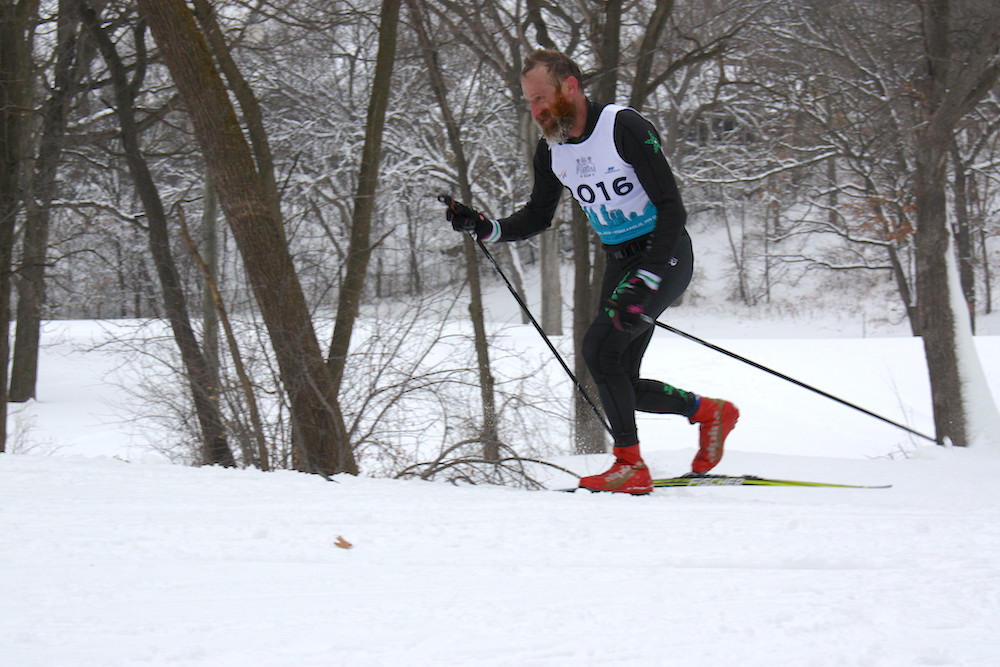
Cross-country skiing is quite close to classic skiing. In the latter, one moves around the designated territory without extra technical help like ski lifts. So, when you need to go up the hill, you can use only the equipment you have. The essential gear and clothing include
- jacket (an insulated one is better, especially if it’s close to 0 °C);
- sweatshirt or warm sweater (depending on the weather) – several layers of clothes are preferable to be able to adapt to the changing temperature during skiing;
- heavy gloves;
- headgear;
- warm socks;
- sunglasses and sunscreen;
- lip balm;
- and a pair of skis and poles, of course.
Source: https://unsplash.com/photos/nFs98G05ZHM
Why Minnesota?
Whether you’d like to go cross-country skiing for recreational purposes or to practice it as a sport, Minnesota welcomes you. The total length of both groomed trails and those in backcountry terrains you can find in the state exceeds 1900 miles!
If you’re a local, it won’t take a lot of your time to get to one of the parks or forests. That means you can easily go there between your workdays or in the middle of a term, on the weekend.
So, prepare the equipment you need, complete urgent assignments beforehand, and have fun! In case you have to choose between that and staying at home or on campus to do your homework, EssayHub is here for you! You can delegate some tasks and relax.
In Minnesota, you can even attend special skiing events like Free Play Snow Day or Winter Trails Day! In addition, the City of Lakes Loppet and Vasaloppet USA competitions are hosted here. So, please welcome the top five places to enjoy cross-country skiing in Minnesota.
5 Best Spots for Cross-Country Skiing
Jay Cooke State Park, Carlton
This park offers numerous groomed trails and backpack campsites. The latter can be closed during winter and opened upon a request. Avid bird enthusiasts can enjoy skiing there for a reason: there are nearly 200 species of birds, and even in winter, there is a chance to spot about 20 species.
You can also ski right to Oldenburg Point to have a great view of the Saint Louis River Valley or enjoy the sight of the Thompson Dam.
Giants Ridge, Biwabik
This place used to be a training center for athletes. Today, it serves as one of the largest areas for fans of cross-country skiing. Most of the trails are open since early morning (~8:00 AM). The lengths of those range between 2 and 8 miles; the easy ones do not exceed 4 miles. A daily adult pass costs $17, and the one for children – $10. There are also seasonal passes that presuppose discounts for families.
Source: https://unsplash.com/photos/LbScmQnQncc
Sugarbush Trail, Tofte
Here, you can rent a bike or ski equipment to spend a great day riding down snowy trails. Both newbies and pros are welcome here: the park has a huge network of trails of different kinds. In addition, there are plenty of resorts nearby, so you can plan a whole weekend or even a vacation here!
Theo Wirth Park, Minneapolis
This one is considered the largest park in Minnesota, and there are great views of the local lake system. The total length of trails is over 15 miles. Besides skiing, one can also enjoy riding a bike, golfing, snowboarding, playing tennis, fishing, and many more. So, even without snow, you will definitely find the activity you will take a shine to.
Maplelag Resort, Callaway
The history of this resort began in the 1970s. It offers a full rental of equipment, including boots, and you can have ski lessons here as well! Since the place is suitable for all levels of abilities, you can be sure that even without experience, you won’t waste your time.
In addition, the rooms you can rent here don’t have any kind of gadgets like a TV or phone. So, urban citizens can have some rest and stay closer to nature first of all. At this resort, you can also enjoy snowshoeing, ice skating, sliding, and ice fishing!
Source: https://unsplash.com/photos/EnTU_hr9wPA
Don’t Forget About the Safety Measures
Finally, before embarking on your trip or exercise session, stick to the safety rules:
- do not ski alone if possible – especially if skiing off-trail – or at least let someone close know about your location;
- check your gear and clothing to make sure nothing is damaged or malfunctions;
- have a backpack with the first-aid kit, duct tape, whistle, food, and water;
- drink and have snacks regularly, even if you’re not very hungry or thirsty.
Also, if you’re 16+, you might need a ski pass. So, check with the rules of the place you’re going to visit to make sure you are aware of the current public health regulations and specific season rules. Good luck!



